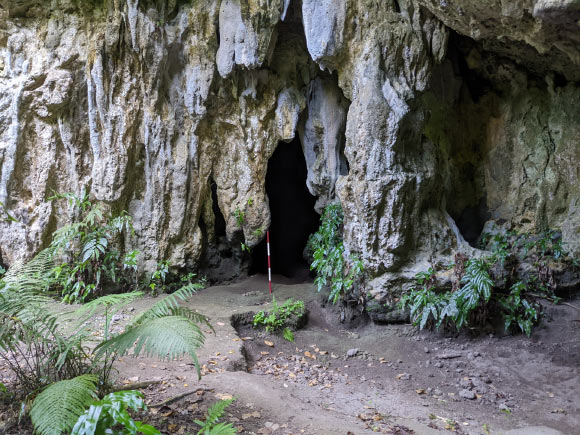Rice was a staple crop in the ancestral Austronesian regions of Taiwan and Island Southeast Asia, but it was unknown in any of the Pacific Islands at the time of European encounters, with the exception of the unique case of Guam and the Mariana Islands. New research by scientists from Guam, China and Australia confirms the presence of abundant rice husk and leaf phytoliths adhering to red-slipped pottery found in Ritidian Beach Cave in Guam, dated by radiocarbon to 3,500 to 3,100 years ago.

The question of early rice in the settlement of the Pacific Islands links to the larger context of rice as a staple food among the ancient Austronesian-speaking peoples, responsible for the world’s most widespread language family before the overlay of global colonial expansions.
Although Austronesian people grew rice since at least 4,800 years ago in Taiwan, the cultivation apparently declined among the communities beyond eastern Indonesia into the Remote Pacific Islands.
Ancestral Austronesian populations migrated from Taiwan through the Asia-Pacific region, starting around 4,200 years ago.
These early islanders brought domesticated rice from Taiwan, traced back to a source in the middle Yangtze Basin of mainland China.
Within this context, the role of rice in Guam and the Mariana Islands in western Micronesia has attracted intense attention, as the Marianas were the only islands in Remote Pacific Oceania where people grew rice, attested at least as early as the documentary records of the 1500s through 1600s.
“The findings offer new clues about ancient migration and culture,” said Dr. Hsiao-chun Hung, an archaeologist at Australian National University.
“Until now, archaeological evidence has revealed only rare traces of rice in the remote Pacific dating back perhaps 1,000 to 700 years ago — so the evidence we’ve found pushes that timeline back significantly.”

Dr. Hung and her colleagues found the ancient remains of rice in Ritidian Beach Cave in northern…
Read the full article here
